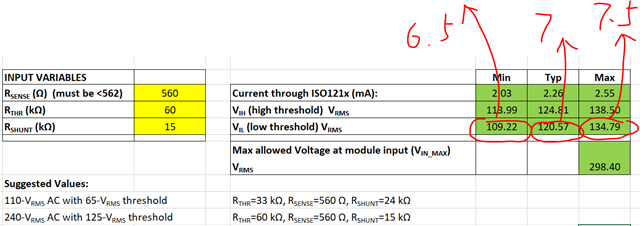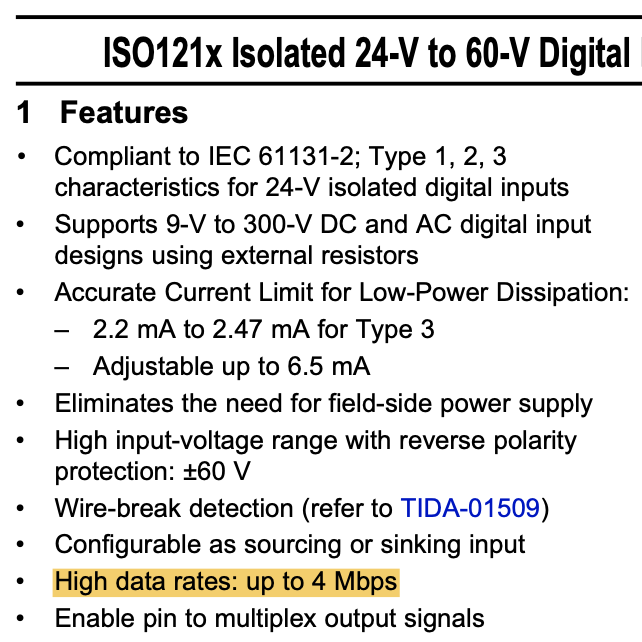Hi,
My customer has two questions regarding ISO1211.
Firstly, they want to utilize ISO1211 to do ac voltage detection. They want to know more details about the detection mechanism, when ISO1211 senses the ac voltage, does it sense the instantaneous value at some specific time point, or sense many points during a certain time period, then calculate the effective value? If it is the second case, how long is the time period?
Secondly, in the datasheet, 6.9 Electrical Characteristics—DC Specification, here shows the min value and typical value of Low level threshold voltage VIL, as well as the typical value and max value of high level threshold voltage VIH, but how about the max value of VIL and min value of VIH? I see that in the excel calculator, there are some formulas and data to calculate VIL and VIH, but just in one test condition. Can we guarantee the data in the excel calculator? And can we provide more detailed data besides that in the excel calculator? Thanks.
Regards,
Xiaoying



